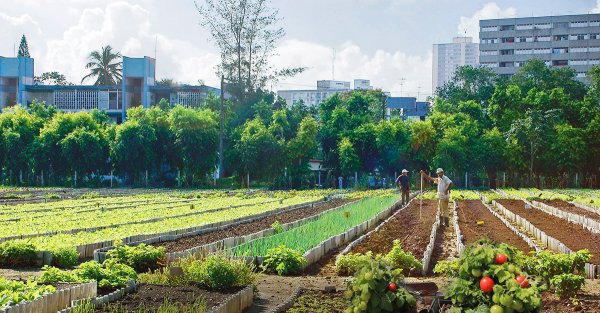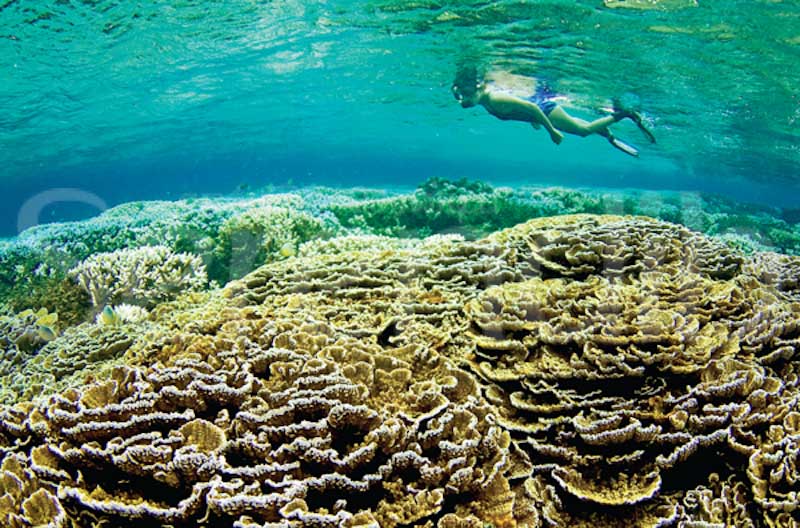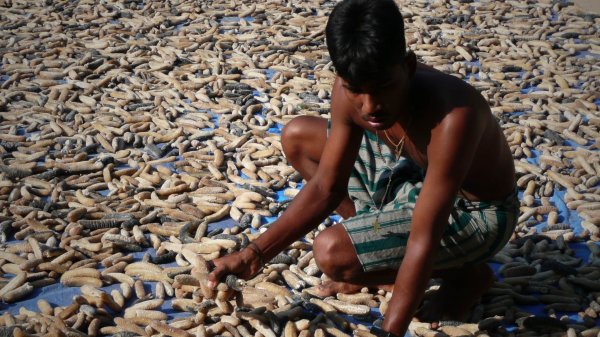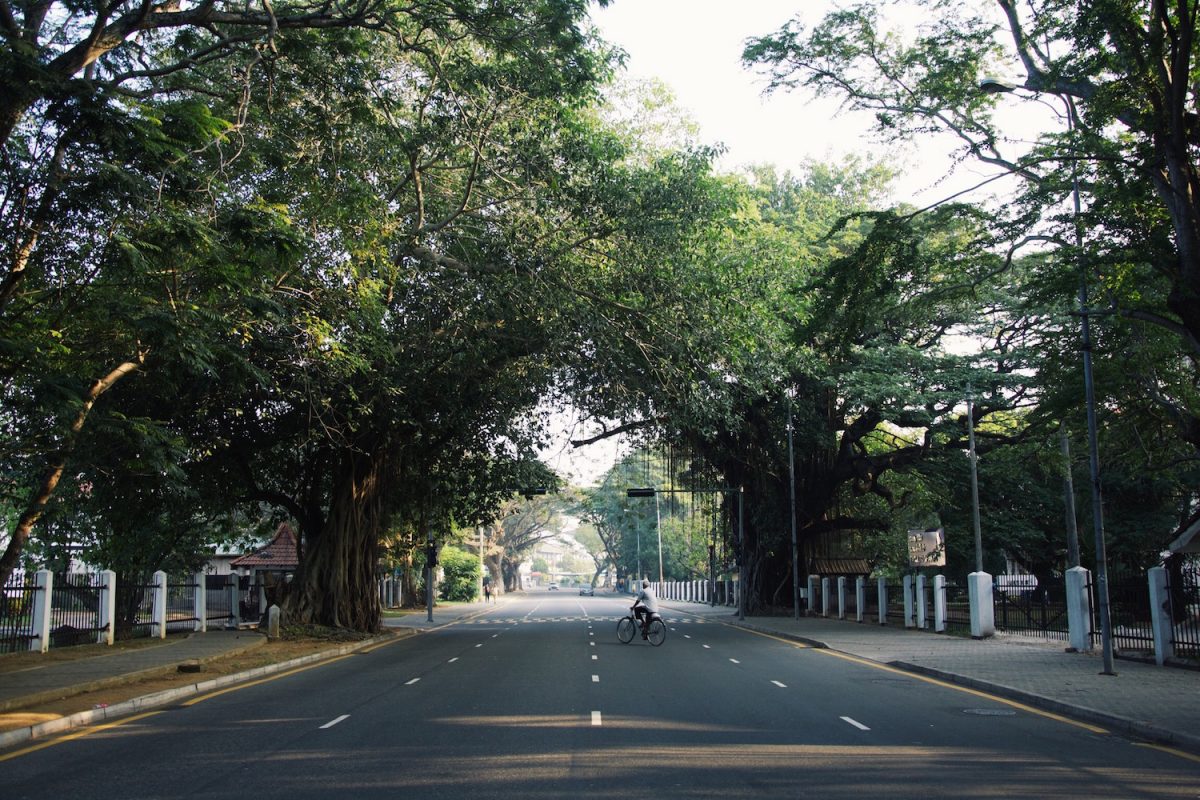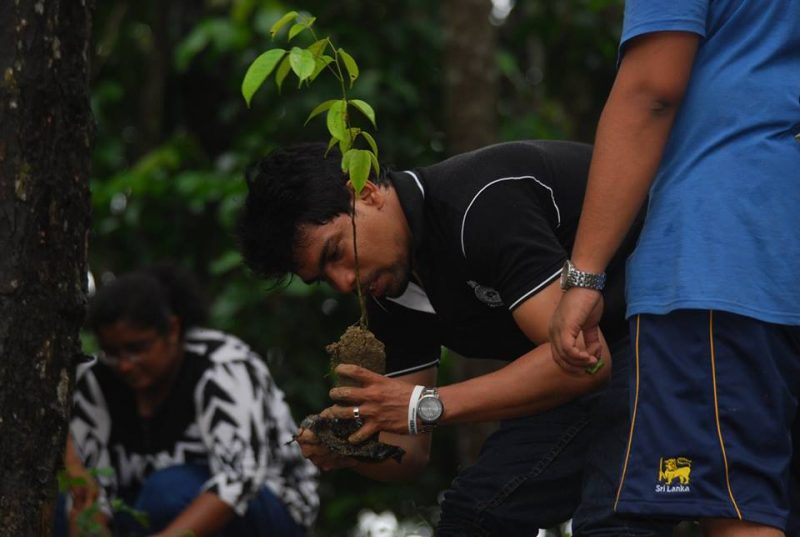
If you wanted to do something that would benefit future generations to come, help save planet Earth and combat global warming at the same time, what would it be? For those of you racking your brains for some complex, super-human solution, the answer is simple, really ‒ just plant a tree.
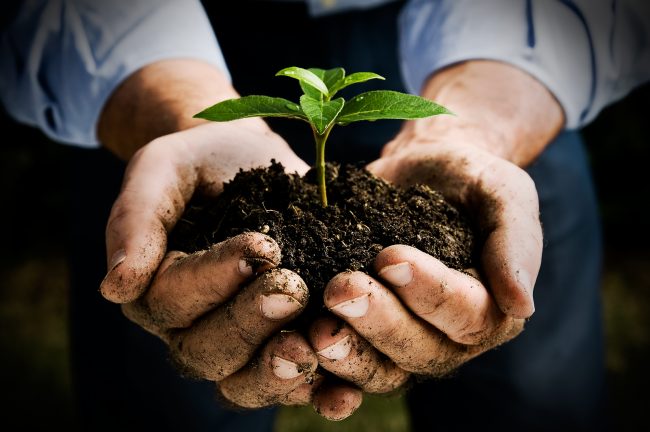
Planting this single tiny seedling in your backyard can make a difference in the world. Image credit: zululandobserver.co.ze
This is the same answer a group of enterprising young university students arrived at when presented with a chance to carry out a CSR activity. Following the dictum of saving tomorrow, today, Reforest Sri Lanka is a society of committed student activists from the University of Moratuwa, dedicated to making a change in the country ‒ and the world. With the aim of creating a greener Sri Lanka, restoring the country’s forests and fighting global warming (which is real, no matter what rubbish global warming naysayers are spouting), Reforest Sri Lanka means to protect Sri Lanka’s natural heritage and contribute towards the global battle against climate change by the simple means of planting trees.
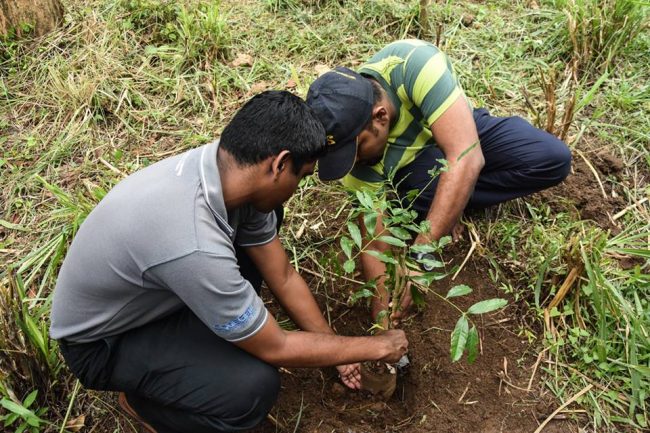
Planting a tree; two members of Reforest Sri Lanka hard at work during a project at the Samanala tank catchment area.
Why Is Planting Trees So Important?
Not only are trees the world’s single largest source of breathable oxygen, but they also detoxify the air, prevent water pollution, stabilise the soil, bring communities together, offer shade, food and medicine, and shelter countless animals and birds. Just two mature trees can produce enough oxygen for a family of four!

A few thousand years more of environmental abuse, and this might just become a reality. In the animated movie The Lorax, trees are extinct, and the only clean air people can get comes from out of a bottle. Image credit: newtaboo.com
Everything about trees speak of life, yet with the ever-escalating problems of human population growth and the rapid rise in development projects, we find deforestation flourishing and the world’s forests being slowly devastated. According to the Earth Day organisation, our planet is at present losing a whopping 15 billion trees a year due to deforestation, development and bad management of forests. The situation unfortunately seems to be escalating rather than declining, prompting activists to vote the theme of this year’s Earth Day (which fell on April 22) to be ‘Trees for the Earth’ in an effort to educate people on the importance of our trees.
Regrettably, the plight of trees in our own country is just as dire. In spite of its comparatively small land area of 65,610 km², Sri Lanka is one of the world’s few remaining biodiversity hotspots. However, statistics reveal the alarming fact that between the years 1990 and 2010 alone, Sri Lanka has lost an average of 24,000 hectares of forest per year. Even more alarming is knowing that human activities and forest devastation are still flourishing unchecked. With our rich flora and fauna and high number of endemic species, the need for reforestation and the preservation our surviving forests is more urgent than ever.
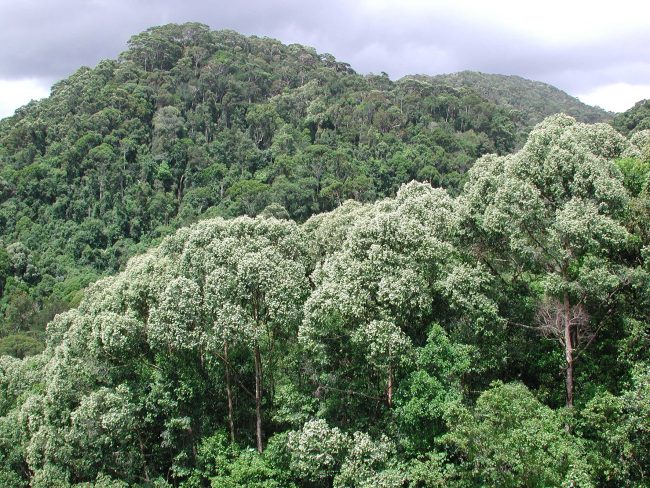
Tree canopy over Sinharaja Forest- we could lose this splendour if we are not careful. Image credit: ufz.de
Reforesting Sri Lanka, One Tree At A Time
With all this in mind, Reforest Sri Lanka has three main aims:
- To actively reforest the land.
- To mitigate deforestation by educating the public on the importance of trees.
- To promote a culture of tree planting in homes, schools, offices, and the island as a whole.
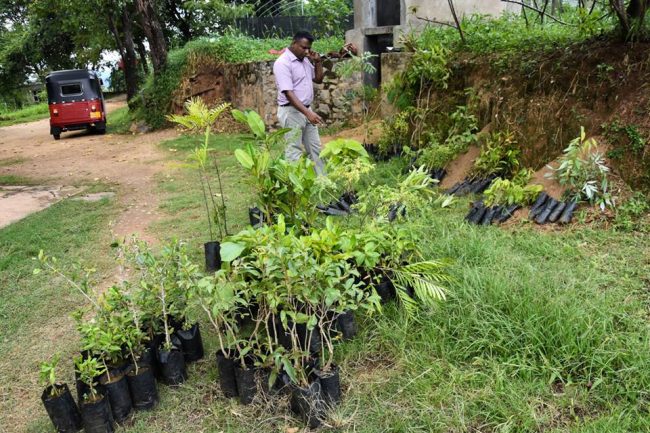
Donated saplings waiting to be planted.
Since its inception in January last year, this group of dedicated youth has made fair progress; they have so far planted 500 trees in various small-scale reforestation campaigns, and donated 400 plants to the Leo Club to be distributed to various schools. Projects have been carried out in places across the island, including the University of Kelaniya (which was recently declared the first national green university), the Samanala tank catchment area, the Kottawa Forest Reserve in Galle, and in the North and East, in collaboration with the Sri Lankan navy.
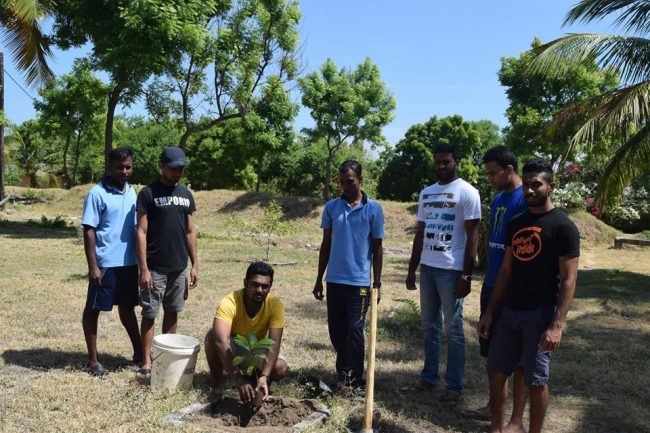
Tree planting with Sri Lanka Navy in the North-East.
Unfortunately, people are cutting down trees faster than they can plant them, so the members of Reforest Sri Lanka have decided to go all out and do things on a slightly larger scale.
Help Plant 84,000 Trees This Wesak
Yes, the initiative has now come up with its loftiest goal yet ‒ the planting of 84,000 trees to mark Wesak this May. The number has a rather special significance in Buddhism, being in honour of the 84,000 Dhammakkhandha of the Dhamma. After consultation with the Forest Department of Sri Lanka and experienced academics, Reforest Sri Lanka has decided to go with sustainable reforestation to ensure better chances of survival for the trees they will be planting.
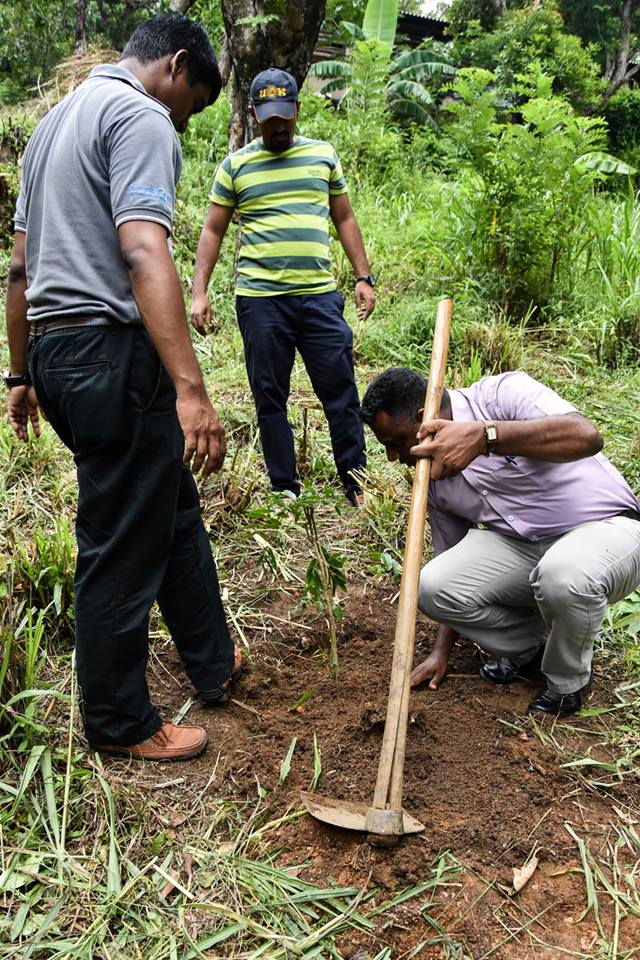
Members of Reforest Sri Lanka planting a sapling at the Samanala catchment area. Twenty five varieties of trees including na, weera, palu, burutha, milla, mahogany, mee, teak, sandalwood, tamarind, and pihimbiya were planted.
The idea of planting 84,000 trees is a daunting one, and pulling this off will be no mean feat; the plants cost money, of course, and 84,000 saplings certainly aren’t going to plant themselves! However, with your help, it just could happen.
Reforest Sri Lanka needs all the support it can get to purchase and donate tree plants, carry out the land preparation, and do the actual planting. Also, since they mean to actually help the plants grow rather than merely do the planting and then leave them to fend for themselves, the group will need help with site visits to monitor the plants. The smallest of deeds can go a long way ‒ a donation of just 100 rupees can buy two saplings, which can one day grow into two life-giving trees (remember what we said about two trees providing enough oxygen for a family of four?).
If you are interested in saving Sri Lanka’s forests by volunteering for the event, or making a contribution, more details can be found on the Reforest Sri Lanka website, or their Facebook page.
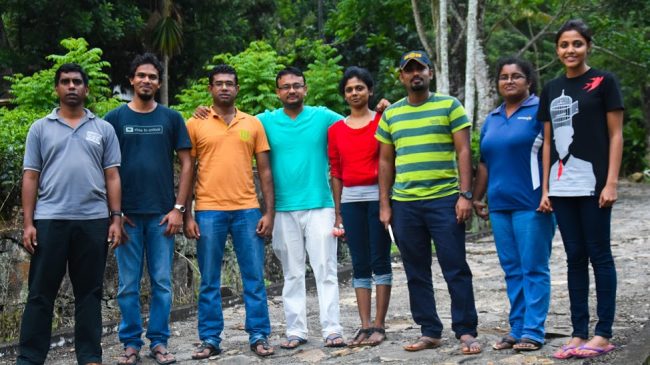
The members of Reforest Sri Lanka
Remember, by helping with this project, you will be doing more than merely planting trees ‒ you are preserving Sri Lanka’s natural legacy, battling climate change, and paving a path for a greener tomorrow. As the old saying goes, the best time to plant a tree was twenty years ago. The second best time is now.
All images of Reforest Sri Lanka are courtesy of Reforest Sri Lanka
Featured Image: Project at Kottawa Forest Reserve, Galle. Image courtesy Reforest Sri Lanka

